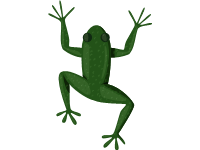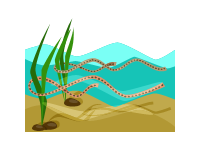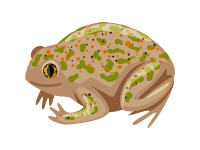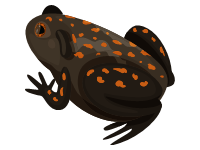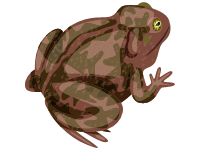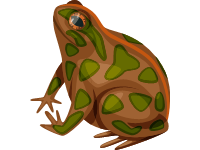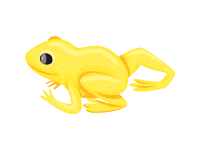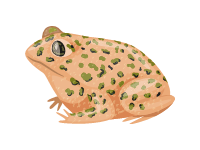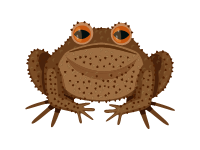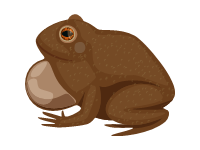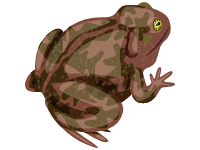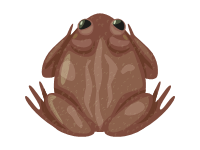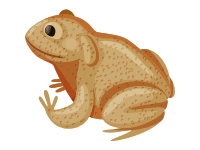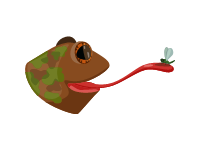The cane toad, also known as the giant neotropical toad or marine toad, is a large, terrestrial true toad native to South and mainland Central America, but which has been introduced to various islands throughout Oceania and the Caribbean, as well as Northern Australia. It is the world's largest toad. It is a member of the genus Rhinella, which includes many true toad species found throughout Central and South America, but it was formerly assigned to the genus Bufo. Тhe cane toad is very large;the females are significantly longer than males, reaching a typical length of 10–15 cm (4–6 in), with a maximum of 24 cm (9.4 in). Larger toads tend to be found in areas of lower population density. They have a life expectancy of 10 to 15 years in the wild, and can live considerably longer in captivity, with one specimen reportedly surviving for 35 years.
The skin of the cane toad is dry and warty. Distinct ridges above the eyes run down the snout. Individual cane toads can be grey, yellowish, red-brown, or olive-brown, with varying patterns. A large parotoid gland lies behind each eye.The ventral surface is cream-coloured and may have blotches in shades of black or brown. The pupils are horizontal and the irises golden. The toes have a fleshy webbing at their base, and the fingers are free of webbing.
Typically, juvenile cane toads have smooth, dark skin, although some specimens have a red wash. Juveniles lack the adults' large parotoid glands, so they are usually less poisonous.The tadpoles are small and uniformly black, and are bottom-dwellers, tending to form schools. Tadpoles range from 10 to 25 mm (0.4 to 1.0 in) in length.
